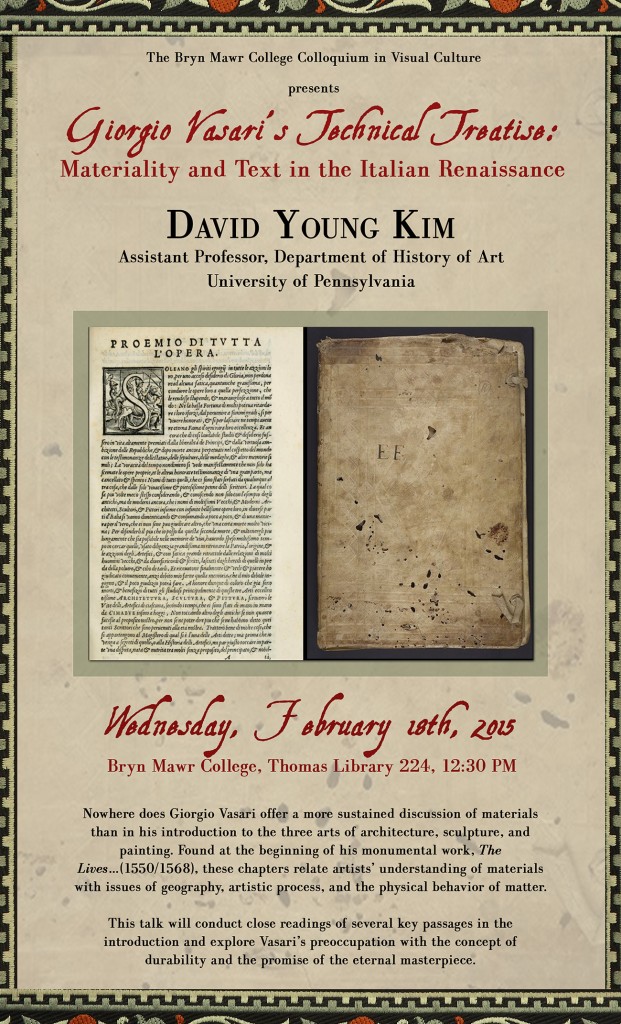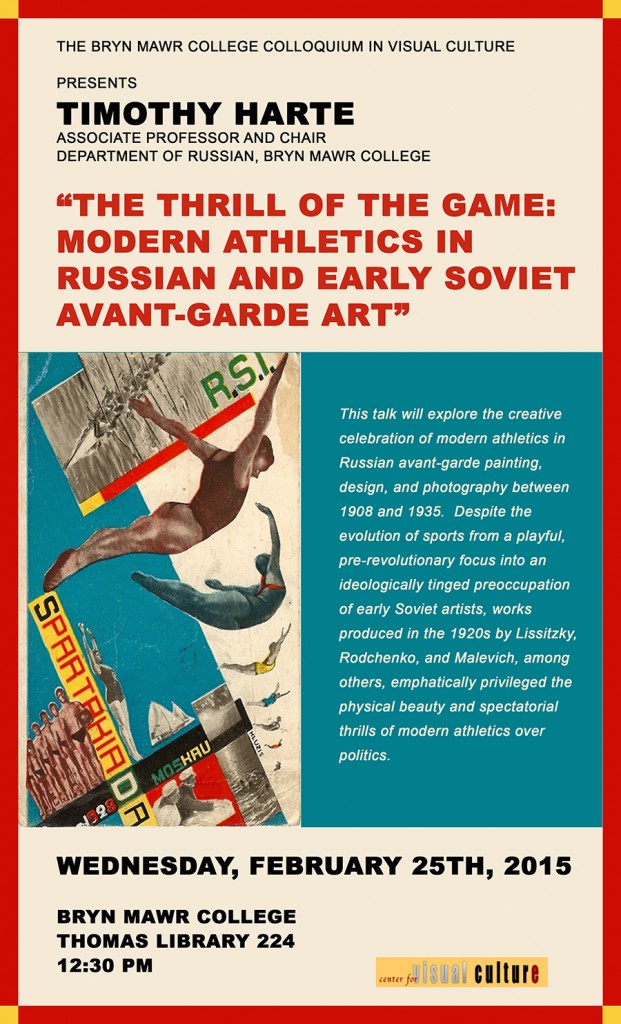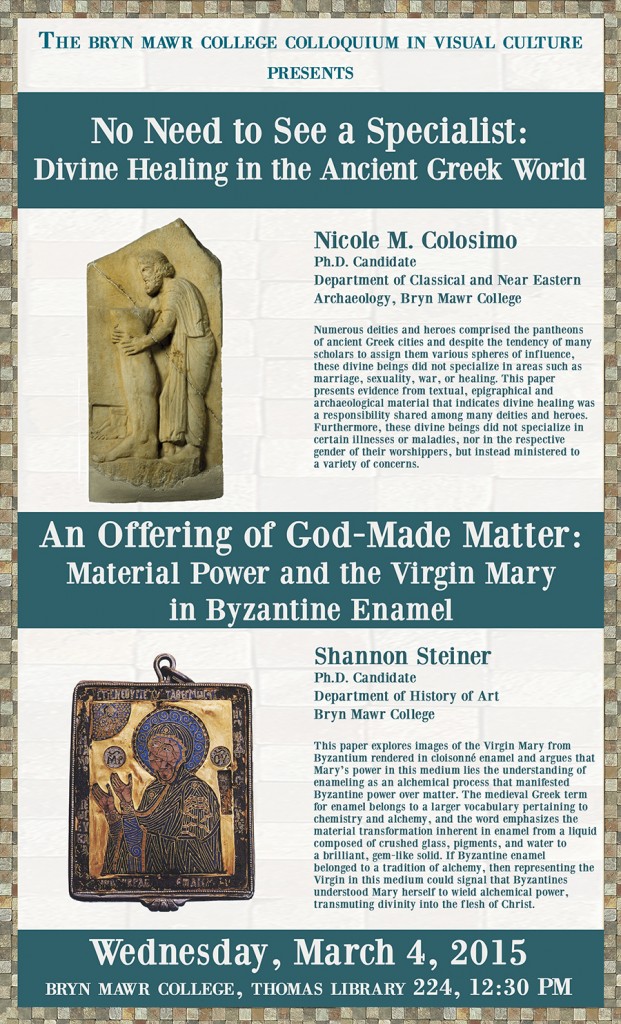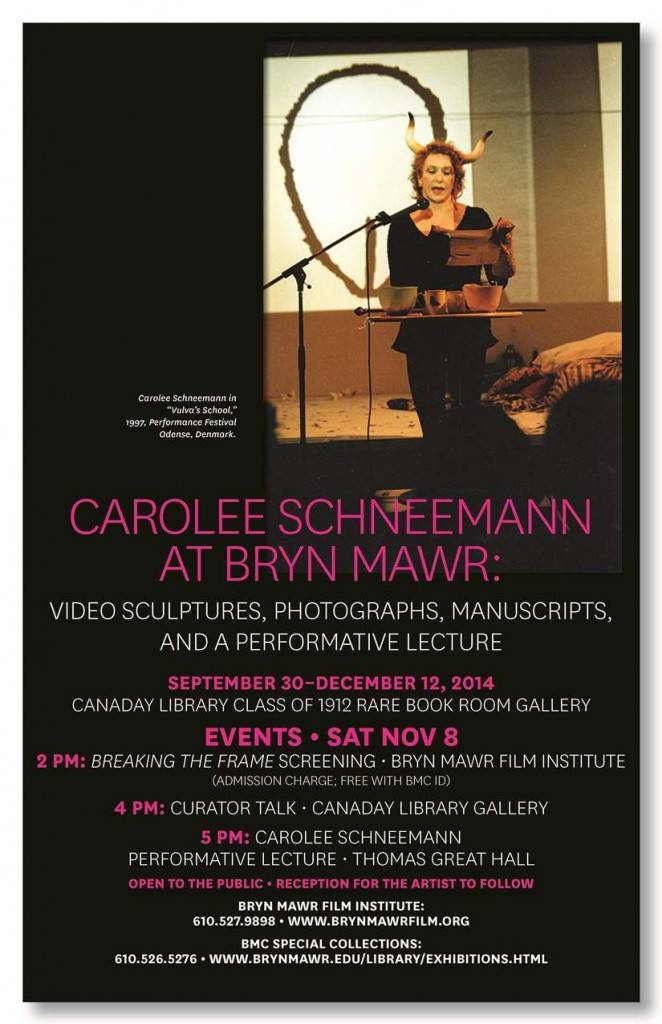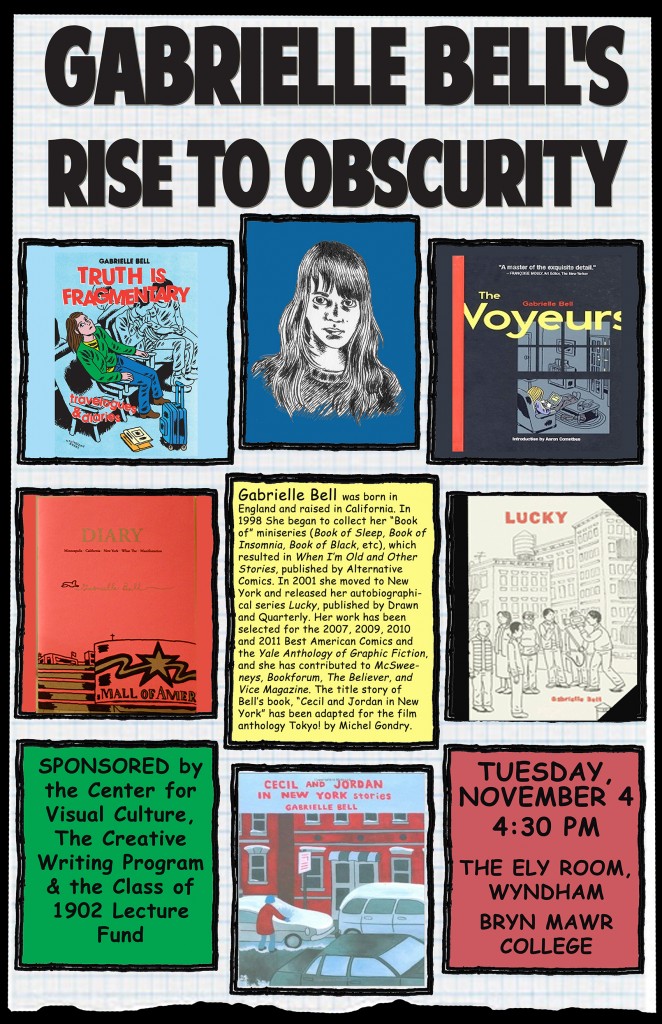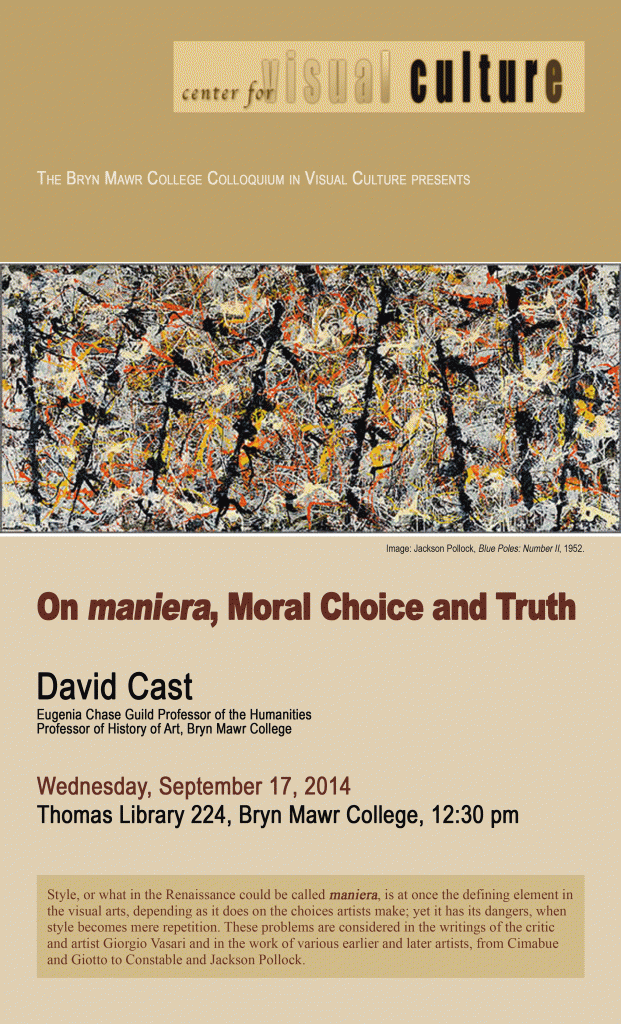College Art Association Meeting
Category Archives: Events
February 18, 2015 – David Young Kim
Assistant Professor, Department of History of Art, University of Pennsylvania
“Giorgio Vasari’s Technical Treatise: Materiality and Text in the Italian Renaissance”
Nowhere does Giorgio Vasari offer a more sustained discussion of materials than in his introduction to the three arts of architecture, sculpture, and painting. Found at the beginning of his monumental work The Lives…(1550/1568), these chapters relate artists’ understanding of materials with issues of geography, artistic process, and the physical behavior of matter. This talk will conduct close readings of several key passages in the introduction and explore Vasari’s preoccupation with the concept of durability and the promise of the eternal masterpiece.
February 25, 2015 – Timothy Harte
Associate Professor and Chair
Department of Russian, Bryn Mawr College
“The Thrill of the Game: Modern Athletics in Russian and Early Soviet Avant-Garde Art”
This talk will explore the creative celebration of modern athletics in Russian avant-garde painting, design, and photography between 1908 and 1935. Despite the evolution of sports from a playful, pre-revolutionary focus into an ideologically tinged preoccupation of early Soviet artists, works produced in the 1920s by Lissitzky, Rodchenko, and Malevich, among others, emphatically privileged the physical beauty and spectatorial thrills of modern athletics over politics.
March 4, 2015 – Graduate Student Panel
Nicole M. Colosimo
Department of Classical and Near Eastern Archaeology, Bryn Mawr College
Member of the Archaeological Institute of America
“No Need to See a Specialist: Divine Healing in the Ancient Greek World”
Numerous deities and heroes comprised the pantheons of ancient Greek cities and despite the tendency of many scholars to assign them various spheres of influence, these divine beings did not specialize in areas such as marriage, sexuality, war, or healing. This paper presents evidence from textual, epigraphical and archaeological material that indicates divine healing was a responsibility shared among many deities and heroes. Furthermore, these divine beings did not specialize in certain illnesses or maladies, nor in the respective gender of their worshippers, but instead ministered to a variety of concerns.
Shannon Steiner
Department of History of Art, Bryn Mawr College
“An Offering of God-Made Matter: Material Power and the Virgin Mary in Byzantine Enamel”
This paper explores images of the Virgin Mary from Byzantium rendered in cloisonné enamel and argues that Mary’s power in this medium lies the understanding of enameling as an alchemical process that manifested Byzantine power over matter. The medieval Greek term for enamel belongs to a larger vocabulary pertaining to chemistry and alchemy, and the word emphasizes the material transformation inherent in enamel from a liquid composed of crushed glass, pigments, and water to a brilliant, gem-like solid. If Byzantine enamel belonged to a tradition of alchemy, then representing the Virgin in this medium could signal that Byzantines understood Mary herself to wield alchemical power, transmuting divinity into the flesh of Christ.
March 11, 2015 – No Colloquium
Spring Break
March 18, 2015 – No Colloquium
Community Day of Learning
November 8, 2014 – Carolee Schneemann event
2pm: Bryn Mawr Film Institute (Lancaster Ave., Bryn Mawr, PA) Breaking the Frame screening
4pm: Bryn Mawr College Canaday Library Gallery
Carolee Schneemann at Bryn Mawr exhibition curator talk
5pm: Bryn Mawr College Thomas Great Hall
Performative lecture by Carolee Schneemann and reception
A screening of Breaking the Frame (2012; 100 minutes)—a film on Schneemann’s life and work by Marielle Nitoslawska—at the Bryn Mawr Film Institute, followed by a talk with exhibition curator Brian Wallace in the Canaday Library gallery, and then the performative lecture by Carolee Schneeman in Thomas Great Hall.
**Carolee Schneemann at Bryn Mawr exhibition in Canaday Library gallery open 11 am – 7 pm on Saturday**
OPEN TO THE PUBLIC; INFORMATION AND DIRECTIONS AT http://www.brynmawr.edu/library/exhibits/schneemann.html AND http://www.brynmawrfilm.org/films/?id=1225
November 18, 2014 – Suzanne Penn
Suzanne Penn
The Theodor Siegl Conservator of Paintings, Philadelphia Museum of Art
“Diego Rivera’s Portable Frescoes: Sugar Cane and Liberation of the Peon ”
Tuesday, November 18 at 5:30pm
Anderson Hall, Room 007
Temple University
1114 Polett Walk (between N. 12th & N. 11th & Norris & Montgomery)
Philadelphia, PA 19122
November 4, 2014: Gabrielle Bell’s Rise to Obscurity
September 17, 2014 – David Cast
Professor of History of Art
Eugenia Chase Guild Chair in the Humanities
Department of History of Art, Bryn Mawr College
“On maniera, Moral Choice and Truth”
Style, or what in the Renaissance could be called maniera, is at once the defining element in the visual arts, depending as it does on the choices artists make; yet it has its dangers, when style becomes mere repetition. These problems are considered in the writings of the critic and artist Giorgio Vasari and in the work of various earlier and later artists, from Cimabue and Giotto to Constable and Jackson Pollock.

